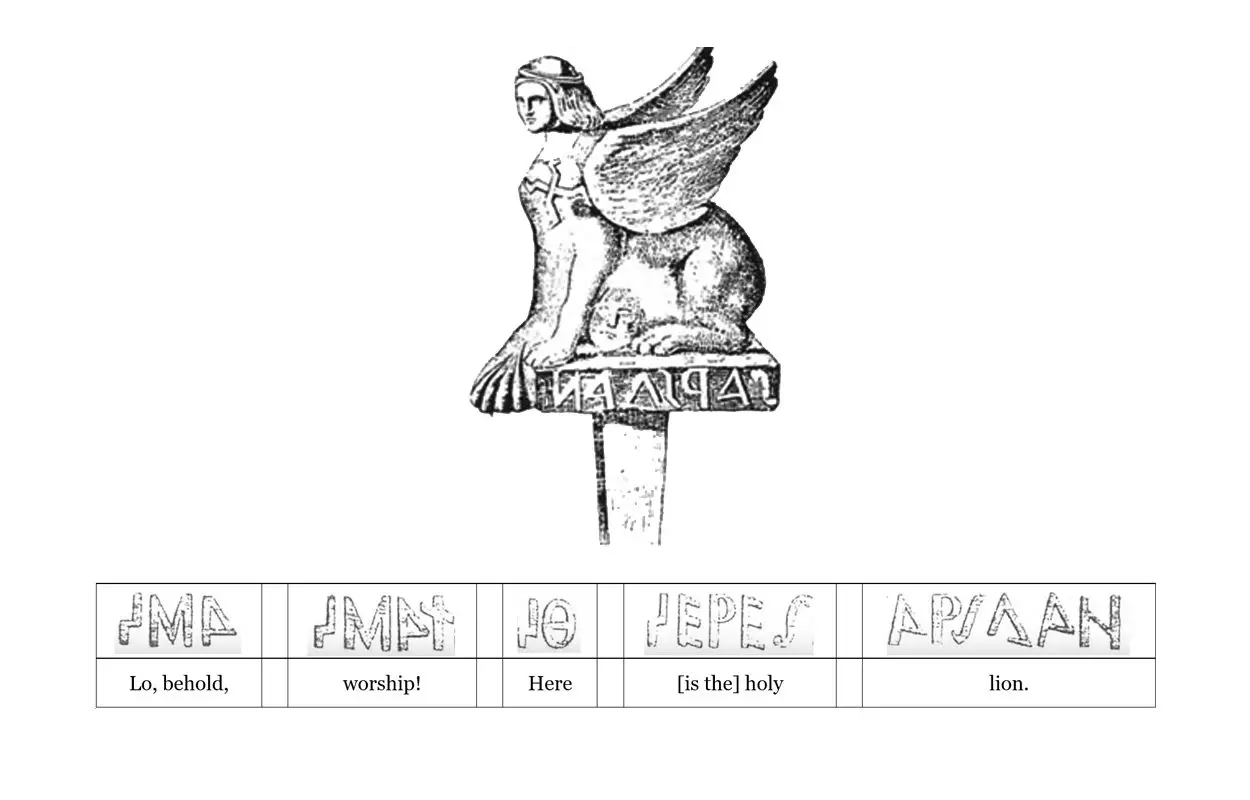The portrayal of Sphinxes first emerged in Egypt and then expanded to the Near East and Greece in the Bronze Age, followed by Central Asia during the Iron Age.
In contrast to the Egyptian sphinxes, examples of Naxian sphinxes depict a winged lion with a female face that became a common form in the Greek and Roman times.
One such example of a Naxian-style Sphinx was uncovered in the Roman provincial town of Potaissa, located in present-day Romania, which was lost during the War of Independence of 1848-1849 from the art collection of Count Kemény.
This sphinx was likely associated with an Isis sanctuary at Potaissa and has an inscription with twenty letters around its pedestal that uses a variant of the Greek alphabet unlike the Pannonian dedicatory plaques, which use the Latin alphabet.
The study authors said: “The sphinx inscription alphabet has many archaic features that remind one of the Dipylon alphabet. On the other hand, it has some features that are closer to the Megara and Naxos alphabets.”
This suggests that the sphinx alphabet lies somewhere between the archaic Dipylon and the Megara alphabets. The I, R, S, and T letters in the sphinx inscription more closely resemble the Dipylon forms, whereas the A and M letters bear greater resemblance to the Megara forms.
It is conceivable that this transitional phase existed during the establishment of the Megara colonies in history, and that is the form that spread to Potaissa and appears on the Potaissan sphinx statue.
An examination of sketches depicting the sphinx revealed that the inscription constitutes a metric poem composed in dactylic hexameter. This intricate poetic meter originated from ancient Greek verses and was subsequently embraced by Latin literature. Dactylic hexameter employs a recurring rhythmic structure of six metric feet per line, accentuating certain syllables over others.
According to the study, the poem is written in a proto-Hungarian language and welcomes visitors approaching the sphinx: Íme imádd: itt híres oroszlán (“Lo, behold, worship: here is the holy lion”).





